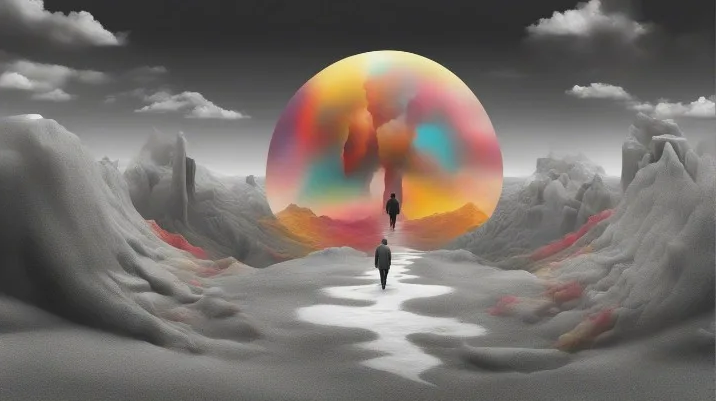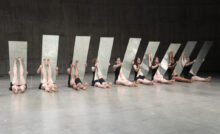The Hyperreal World of Photorealism: A Detailed Exploration


In a world where digital photography dominates visual culture, the painting trend of photorealism stands out as a remarkable testament to the skill and dedication of artists who strive to replicate reality with astounding accuracy. This art movement, which emerged in the late 1960s and early 1970s, continues to captivate audiences with its meticulous attention to detail and lifelike representation. In this article, we’ll delve into the origins, techniques, notable artists, and enduring appeal of photorealism says, Omar Hussain.
What is Photorealism?
Photorealism is a genre of art that involves painting or drawing in a way that is so detailed and precise that the final image resembles a high-resolution photograph. This style of art requires immense technical skill and patience, as artists often spend hundreds of hours perfecting their work to achieve a level of realism that blurs the line between art and reality.
Origins of Photorealism
Photorealism emerged as a reaction against abstract expressionism and minimalism, which dominated the mid-20th century art scene. Artists like Chuck Close, Richard Estes, and Ralph Goings sought to return to the precision and detail of traditional painting but with a contemporary twist. They used photographs as reference points, translating these images onto canvas with remarkable fidelity.
Key Influences:
- Pop Art: The influence of pop art is evident in photorealism’s focus on everyday scenes and objects, as well as its embrace of commercial and popular culture.
- Technology: Advances in photography and printing technology provided artists with the tools to capture and reproduce images with greater accuracy, serving as the foundation for their detailed paintings.
Techniques of Photorealism
Creating a photorealistic painting involves several key techniques and processes:
Photographic Reference:
- Artists begin by taking high-resolution photographs of their subjects. These photographs serve as the primary reference for the painting, capturing intricate details, lighting, and perspective.
Grid Method:
- Many photorealists use the grid method to transfer the photographic image onto the canvas. By dividing both the photograph and the canvas into a grid, artists can accurately replicate the proportions and details of the original image.
Layering:
- Photorealistic paintings are often built up in layers, starting with an underpainting that establishes the basic shapes and tones. Subsequent layers add depth, texture, and fine details, gradually building up to the final image.
Precision Tools:
- Artists use a variety of precision tools, including fine brushes, airbrushes, and even magnifying glasses, to achieve the minute details required for photorealism.
Notable Photorealist Artists
Several artists have become synonymous with photorealism, each bringing their unique perspective and style to the movement:
- Chuck Close: Known for his large-scale portraits, Chuck Close’s work is characterized by his meticulous grid technique and the use of tiny, abstract shapes to build up the overall image. Despite suffering from partial paralysis, Close continued to create intricate portraits, adapting his technique to accommodate his physical limitations.
- Richard Estes: Richard Estes is celebrated for his urban landscapes and reflective surfaces. His paintings often feature storefronts, glass windows, and shiny cars, capturing the complexity of city life with photographic precision.
- Ralph Goings: Ralph Goings focused on quintessentially American scenes, such as diners, pickup trucks, and fast-food restaurants. His attention to light and texture creates a sense of nostalgia and familiarity in his works.
- Audrey Flack: Audrey Flack’s work blends photorealism with elements of symbolism and feminism. Her still-life paintings are rich in detail and often feature everyday objects arranged in intricate compositions.
The Appeal and Impact of Photorealism
Photorealism continues to captivate audiences for several reasons:
- Technical Mastery: The sheer technical skill required to create photorealistic paintings is awe-inspiring. Viewers are often amazed by the level of detail and precision that these artists achieve.
- Emotional Resonance: Photorealistic paintings can evoke strong emotional responses by capturing moments and scenes with lifelike accuracy. This connection to reality allows viewers to relate to the subjects on a personal level.
- Cultural Reflection: Many photorealistic works capture the essence of contemporary life, from urban landscapes to everyday objects. This reflection of modern culture makes the art form relevant and relatable.
- Artistic Challenge: For artists, photorealism presents a formidable challenge that pushes the boundaries of their technical abilities. It requires a deep understanding of light, color, and form, as well as immense patience and dedication.
Photorealism is a fascinating art movement that combines the precision of photography with the creativity and skill of painting. Its meticulous attention to detail and lifelike representation continue to captivate audiences and challenge artists. As technology and techniques evolve, photorealism remains a dynamic and influential genre, celebrating the beauty and complexity of the world around us.
Omar Hussain Chicago: Whether you’re an art enthusiast or an aspiring artist, the world of photorealism offers a unique and compelling perspective on the intersection of art and reality. Explore the works of photorealist artists and appreciate the incredible dedication and talent that brings these hyperrealistic visions to life.
Recent Posts
The Transformative Power of Performance Art in Contemporary Society
Performance art, a form of art where the artist’s actions become the medium, has evolved…
How Public Art Transforms Urban Communities
Public art, encompassing a wide range of creative expressions displayed in public spaces, has a…
Hidden Gems: Underrated Galleries and Museums around the World
While famous institutions like the Louvre, the Metropolitan Museum of Art, and the British Museum…
Exploring the World’s Most Vibrant Art Districts
Art districts around the globe serve as cultural hubs, bringing together artists, galleries, museums, and…
The Vibrant World of Street Art: Celebrating Outstanding Artists
Street art has evolved from simple graffiti tags to a respected and celebrated art form…
Exploring the Art World: Art in Pop Culture
The art world is a fascinating landscape that constantly evolves, inspiring and challenging those who…

